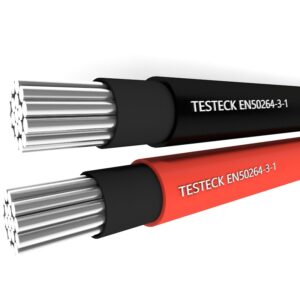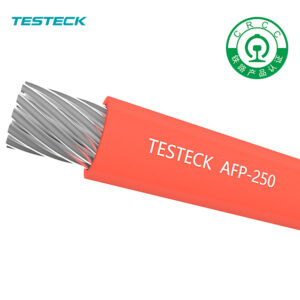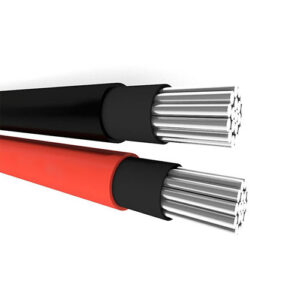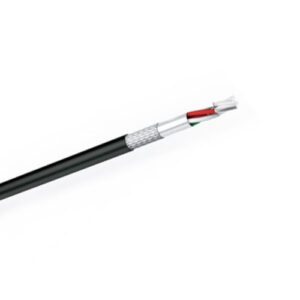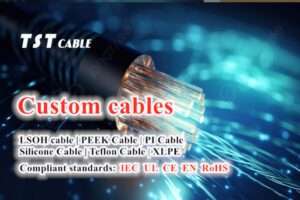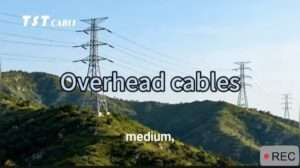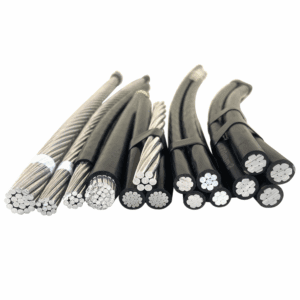
Fire Resistant
EN45545-2
- Customized Design Production
Small MOQ
Short Lead Time
- Long Time Guarantee
- Home
- /
- Low Smoke Halogen Free...
Low Smoke Halogen Free Flame Retardant Cable (LSZH/LSOH/LS0H/LSFH/OHLS Cable)
China lszh cable supplier TST CABLES reveals high-quality LSZH cable technical requirements and LSZH cable materials, LSZH cable applications, LSZH cable FAQ guide, etc.
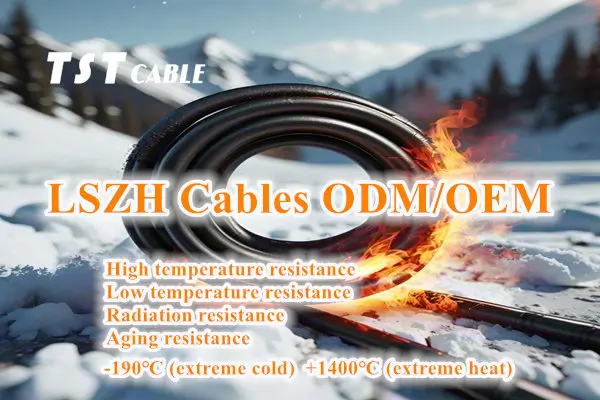
What is low smoke halogen free flame retardant cable?
LSZH cable, full name low smoke halogen free flame retardant cable (Low Smoke Zero Halogen), is a specially designed type of wire and cable.
LSZH cable material is made of rubber that does not contain halogen (F, Cl, Br, I, At), lead, cadmium, chromium, mercury and other environmental substances. When the insulation layer material is burned, it does not release halogen-containing gas and the smoke concentration is low.
LSZH or low smoke halogen free material refers to a cable sheath material with flame retardant and non-halogenated properties. It produces a low level of smoke and does not contain acidic gases. Since LSZH does not contain halogens, such as F, Cl, Br, l, At, the above elements are toxic and corrosive when burned. The manufacturing environment of low-smoke halogen-free cables is also very safe. They are made of environmentally friendly rubber materials that do not contain environmental substances such as lead, cadmium, chromium, and mercury. Therefore, these characteristics of low-smoke halogen-free cables determine that low-smoke halogen-free cables are widely used in important places such as nuclear power plants, subway stations, hospitals, aviation, oil and gas, and ships.
The abbreviations LSZH, LSOH, LS0H, LSFH, and OHLS all refer to the same type of cable sheath material, namely “low-smoke halogen-free cables”. These terms may vary in different regions and industry standards, but the basic meaning is the same, all referring to cable materials that produce less smoke and do not contain halogens when burned. However, in some cases, different naming may have subtle emphases or differences based on specific standards or manufacturer preferences. However, these differences are often not essential, but caused by naming habits or market positioning. The following is a detailed introduction of some details and application scenarios that TST CABLES may involve for these abbreviations.
Characteristics of low-smoke halogen-free flame-retardant cables
Low Smoke: This means that in the event of a fire, the amount of smoke released when the cable burns is much lower than that of traditional cables. Reducing smoke helps improve visibility during fires, facilitates evacuation, and reduces the risk of inhaling toxic smoke.
Zero Halogen: Halogens (such as chlorine and bromine) generate toxic and corrosive halide gases when burned at high temperatures, causing serious damage to human health and electronic equipment. Halogen-free materials do not release these harmful gases when burned, improving safety while reducing pollution to the environment.

Material composition: The sheath of low-smoke halogen-free cables is usually made of halogen-free thermoplastic or thermosetting materials, such as cross-linked polyethylene (XLPE) and polyolefins. These materials ensure the above-mentioned low-smoke halogen-free characteristics while maintaining good electrical properties.
LSZH Low Smoke Zero Halogen Flame Retardant Cable Technical Specifications
Cable Type: LSZH (Low Smoke Zero Halogen) Cable
Measurement: Full range instrument, depending on application requirements
Voltage: Determine the range according to the use requirements
Temperature: Choose a variety of temperatures according to the purpose (working temperature range: -100℃-+260℃, TST cables can be customized according to your actual application scenario)
Standards and Certifications: ISO/IEC11801, ANSI/TIA-568-2, Fire Classification Reaction-Dca, ETL and DELTA certifications, etc.
- IEC 60332-1: Flame propagation test for single insulated wires and cables placed vertically.
- IEC 61034: Determination of smoke density generated when cables burn.
- EN 50575: Classification of cable performance in fire.
LSZH low-smoke halogen-free flame-retardant cable application areas
Since LSZH cables have less smoke and are non-toxic, they are often used in various applications, including but not limited to the following applications:
Public transportation: subways, buses, airports, tunnels, stations (cars, trucks, buses, airplanes, trains and ships) and other places with dense crowds and extremely high safety requirements. LSZH cables can effectively reduce the risk of fire.
Construction industry: high-rise buildings, hospitals, schools, hotels, apartments, shopping malls, etc., need to ensure the safe evacuation of personnel and reduce secondary injuries during fires.
Data centers: There are strict requirements for the flame retardancy and low smoke characteristics of cables to protect expensive electronic equipment from fire damage.
Petrochemical and chemical: The special environments of the oil, natural gas and chemical industries require cables to have excellent corrosion resistance and flame retardant properties.
Power transmission: Nuclear power plants, wind power plants, especially in power transmission and distribution systems in densely populated areas, the use of LSZH cables can significantly improve public safety.
Due to its safety and environmental protection characteristics, low smoke zero halogen cables are widely used in densely populated places, subways, hospitals, data centers, airplanes, ships, and places with strict requirements for fire protection and environmental protection.

Differences between different abbreviations of low smoke zero halogen cables (LSZH, LSOH, LS0H, LSFH, OHLS)
LSZH (Low Smoke Zero Halogen) is the most commonly used abbreviation. LSOH, LS0H, LSFH and OHLS are alternative or variant abbreviations that may be used by different regions or manufacturers, and they essentially represent the same concept. This difference may be due to the naming habits of different standard systems or regions, but their core meaning remains unchanged, that is, emphasizing the low smoke zero halogen characteristics of cables.
LSZH (Low Smoke Zero Halogen): This is the most common expression, which directly and clearly points out that the characteristics of the cable are low smoke and halogen-free. It is widely accepted and used in international standards and specifications, and is suitable for almost all environments that require high safety standards, such as public buildings, ships, mines, etc.
LSOH (Low Smoke Zero Halogen): In some cases, LSOH can be considered equivalent to LSZH, with only a small change in naming, and the same emphasis is placed on low smoke and halogen-free characteristics. It may be more common in standard documents or product descriptions in some regions.
LS0H: This abbreviation is a simplified form of LSZH, with “0” replacing “Zero”, which is more convenient in verbal communication or abbreviation. The meaning is exactly the same as LSZH, and it also refers to low smoke and halogen-free cables.
LSFH: Although not as common as LSZH, LSFH may be used by some manufacturers to specifically refer to “Low Smoke Free of Fluorine”, which specifically emphasizes that in addition to being halogen-free, the use of fluorides is also avoided, which is more applicable in certain specific environmental protection requirements.
OHLS: This reversed abbreviation is less common, and may be a misprint or special marking method in some places or specific documents. Its essential meaning should be the same as LSZH, that is, emphasizing the characteristics of halogen-free and low smoke. However, in formal occasions and standard documents, LSZH or LSOH are more standard and common.
LSZH low smoke halogen-free flame retardant cable features
Low smoke emission: In the event of a fire, the amount of smoke released by LSZH cables when burning is much lower than that of traditional PVC (polyvinyl chloride) cables, which helps to improve visibility during fires and create better conditions for personnel evacuation and fire rescue.
Non-toxic Halogen-free: Halogen elements (such as chlorine and bromine) produce toxic gases when burned, causing serious harm to human health and the environment. LSZH cables do not contain halogens and release almost no harmful gases when burned, reducing the risk of poisoning personnel.
Flame retardancy: LSZH cables have good flame retardant properties, which can delay the spread of fire and buy precious time for emergency fire treatment. This feature makes them very suitable for use in environments with strict fire protection requirements.
Environmental protection: Due to the absence of halogens and other harmful substances, LSZH cables are more environmentally friendly and have less impact on the environment after being discarded, meeting the requirements of modern sustainable development and environmental protection regulations.
Heat and corrosion resistance: The insulation layer and sheath materials of LSZH cables have good heat and chemical corrosion resistance, and can maintain good electrical performance and long service life even in harsh environments.
Mechanical properties: Despite the focus on environmental protection and safety, the mechanical strength and flexibility of LSZH cables cannot be ignored. The design takes into account the convenience and durability of installation.
National standard for LSZH low-smoke halogen-free flame-retardant cables
The national standard for low-smoke halogen-free models of wires and cables is JB/T10491-2004. Low-smoke halogen-free wires refer to halogen substances in the insulation layer of wires. When burned, they do not release halogen-containing gases and have low smoke concentrations. The reference standard is JB/T 10491-2004, and the models are WDZ-BYJ, WDZ-RYJ, etc.

Low smoke halogen-free cable: The tensile strength is greater than that of general PVC wires, good fire resistance (-30℃~105℃), good softness (hardness is 80-90), the voltage range is usually 600/1000V, no plasticizer is added, no toxic black smoke is produced when burning (a small amount of white smoke will be produced), and the flame retardant material uses three metal oxides containing crystal water: losing crystal water at 200℃, 300℃, and above 300℃.
The difference between LSZH cable and ordinary PVC cable
In terms of physical properties, LSZH and ordinary PVC cables are very different. PVC jumpers are softer, while LSZH jumpers are harder and contain flame retardant compounds. LSZH cables are more beautiful and safer.
PVC cables are made of polyvinyl chloride, and their sheaths release thick black smoke and hydrochloric acid when burned. Unlike PVC cables, LSZH cables have fireproof sheaths, superior flame retardant properties, very little smoke when burning, and no corrosive gas escapes.
Reduce toxic and corrosive gases produced during combustion, and protect personnel and equipment from harm.
Classification of low-smoke halogen-free flame-retardant cables
Low-smoke halogen-free flame-retardant cables are divided into three grades: A, B, and C. The higher the grade, the better the fire resistance. The specific description is as follows:
Halogen-free flame-retardant cable
Grade A halogen-free low-smoke flame-retardant cable: The flame retardant grade is A, which is suitable for occasions with high requirements for fire resistance, such as high-rise buildings, large shopping malls, hospitals and other public places.
Grade B halogen-free low-smoke flame-retardant cable: The flame retardant grade is B, which is suitable for occasions with high requirements for fire resistance, such as small shopping malls, hotels, apartments and other places.
Class C halogen-free low-smoke flame-retardant cable: The flame retardant grade is C, which is suitable for occasions with certain requirements for fire resistance, such as residences, home offices and other places.
Application scenarios and characteristics of various grades of low-smoke halogen-free flame-retardant cables
Class A halogen-free low-smoke flame-retardant cables
Class A halogen-free low-smoke flame-retardant cables have the best flame-retardant properties and are suitable for high-risk occasions such as crowded places, confined places, and difficult escape. They have the following characteristics:
(1) Very good flame-retardant properties, which can effectively prevent the spread of fire and protect personnel safety.
(2) Long service life, with good durability and anti-aging properties.
(3) Wide range of applications, can be used for wiring in various buildings and external power supply systems.
Class B halogen-free low-smoke flame-retardant cables
Class B halogen-free low-smoke flame-retardant cables are not as good as Class A cables in terms of flame-retardant properties, but can still meet certain fire protection requirements and are suitable for the following occasions:
(1) Places with dense crowds and high degree of closure, such as small shopping malls, hotels, apartments, etc.
(2) The needs of some special industries, such as airports, railway stations, subways and other public transportation places.
Class C halogen-free low-smoke flame-retardant cable
Class C halogen-free low-smoke flame-retardant cable has poor flame retardant properties, but can still meet certain fire protection requirements and is suitable for the following occasions:
(1) Some small residential, home offices and other places.
(2) Temporary power supply needs in low-hazard places, such as construction sites.
What is the difference between LSZH cable and LSF cable?
Some cables are marked as LSF (low smoke), which is different from LSZH.
It only covers part of the equation, because LSF cables may still contain halogens in their materials.
For example, low-smoke PVC cable is LSF, but not LSZH.
These cables still have the threat of halogen gas when burned.
Typically, LSF cables contain additives to help them achieve low smoke and low halogen, but they are not zero halogen.
LSZH cables generally follow stricter standards than LSF cables.
The halogen acids emitted by LSF cables far exceed the limits specified for LSZH cables.
Low Smoke Halogen Free Cable Materials
LSZH cable materials are essentially of two types: thermoplastic LSZH cables and thermoset LSZH cables.
Thermoplastic LSZH materials can be formed by heating multiple times, while thermoset LSZH cable materials can only be formed once.
Therefore, they are not recyclable.
Although PVC is the most common thermoplastic, it is not an LSZH cable because it contains chlorine.
On the other hand, ethylene propylene rubber cable (EPR) and cross-linked propylene cable (XLPE) are LSZH cables.
These two materials are very common in cables along with PVC.
It is worth noting that LSZH cable thermoset materials may not be as flame retardant as chlorinated thermoset materials.
This is a trade-off when using LSZH cables, as their thermal range may be slightly lower than halogen cables.
That said, cross-linked materials, such as XLPE cables, have a higher thermal range.
The LSZH cable material you choose also depends on other factors, such as the rated voltage of the conductor, environmental conditions, and the requirements of the specific application. The material must meet the specified requirements and tests.
Cooperate with cable supplier TST CABLES to customize LSZH cables
In the pulsation of electric current, low-smoke halogen-free cables are not only conductors of electric current, but also guardians of power safety and greenness. From the warmth of home to the arteries of the city, from the heart of data to the forefront of industry, it silently carries every moment of light in life with its excellent electrical performance and durability. In the face of ruthless fire, it opens a life channel for escape with its extremely low smoke and halogen-free characteristics, protecting your mechanical equipment and the safety of life and property. This is not only a technological innovation, but also carries the responsibility for protecting the ecological environment, ensuring that the entire process from production to disposal is harmless, and guarding the green mountains and clear waters.
Choosing TST CABLES low-smoke halogen-free cables means that while pursuing economic benefits, you also take responsibility for the future of society, and pursue development without sacrificing safety and the environment. Every smooth transmission of electric current is a firm guard for a better life. Let us build a safe and green foundation together and leave a better world for future generations. TST CABLES low-smoke halogen-free cables create a halogen-free environment, escort power safety, help environmental protection, and connect a better world.
Related by TST:
Do you know the selection criteria for Mil spec wire aerospace wire?
Do you know the selection criteria for military-standard airport lighting...
Read MoreEssential Guide for Purchasing LSOH Cables in High Temperature Environments UL758
In high-temperature operating environments such as metallurgy, petrochemicals, rail transit,...
Read MoreThree Reasons Why High-End Industrial Parks Choose Overhead Cables for Cable Upgrades
Many people associate high-end industrial parks with underground cables and...
Read MoreSay Goodbye to the “Spider Web”! Low-Voltage Overhead Cables: Urban Power Grid Upgrades
Have you ever noticed the dense, spider web-like tangled exposed...
Read MoreAlso available in:
Arabic
English
German
Indonesian
Japanese
Russian
Spanish
Thai
Vietnamese
Portuguese (Brazil)


